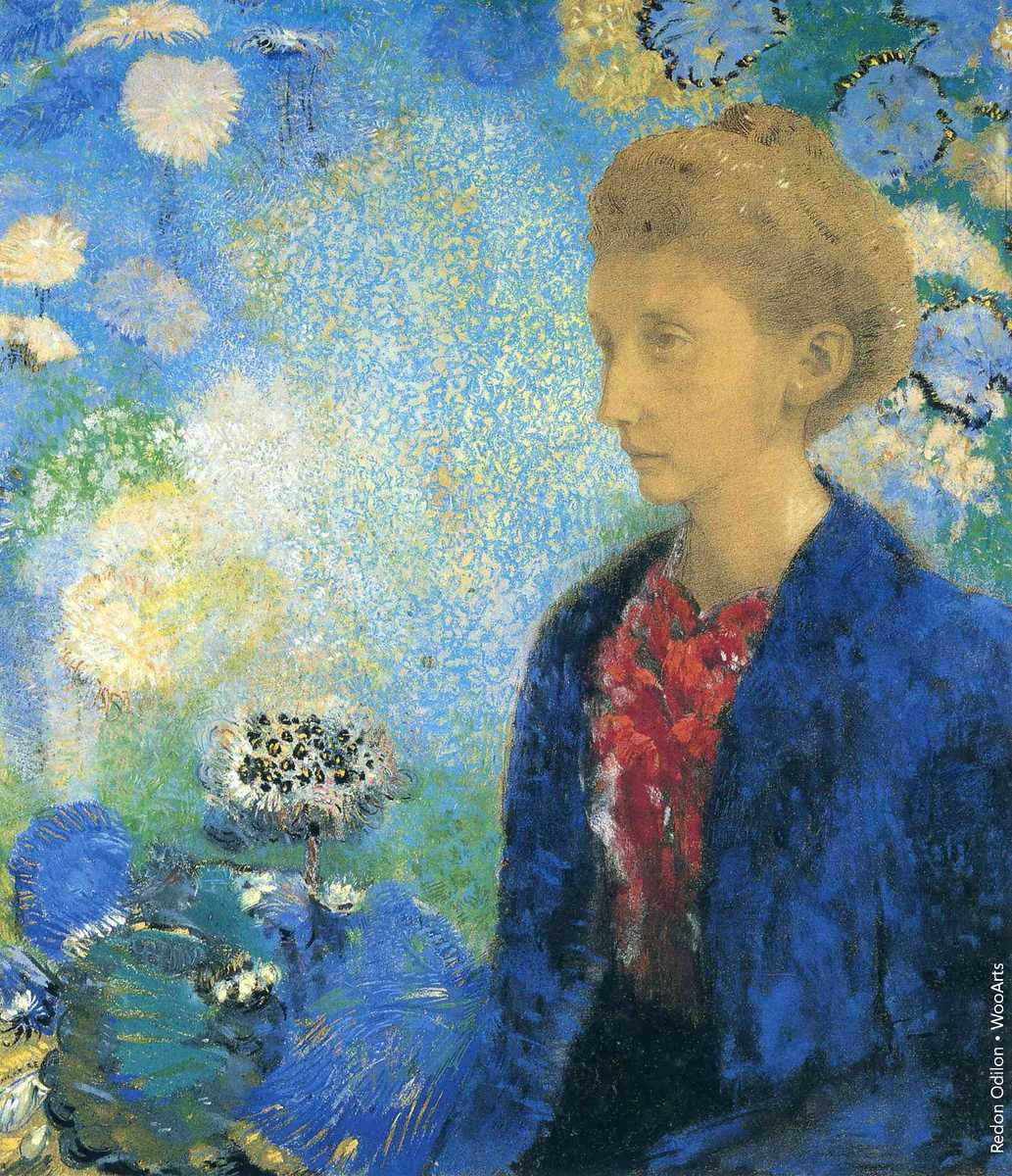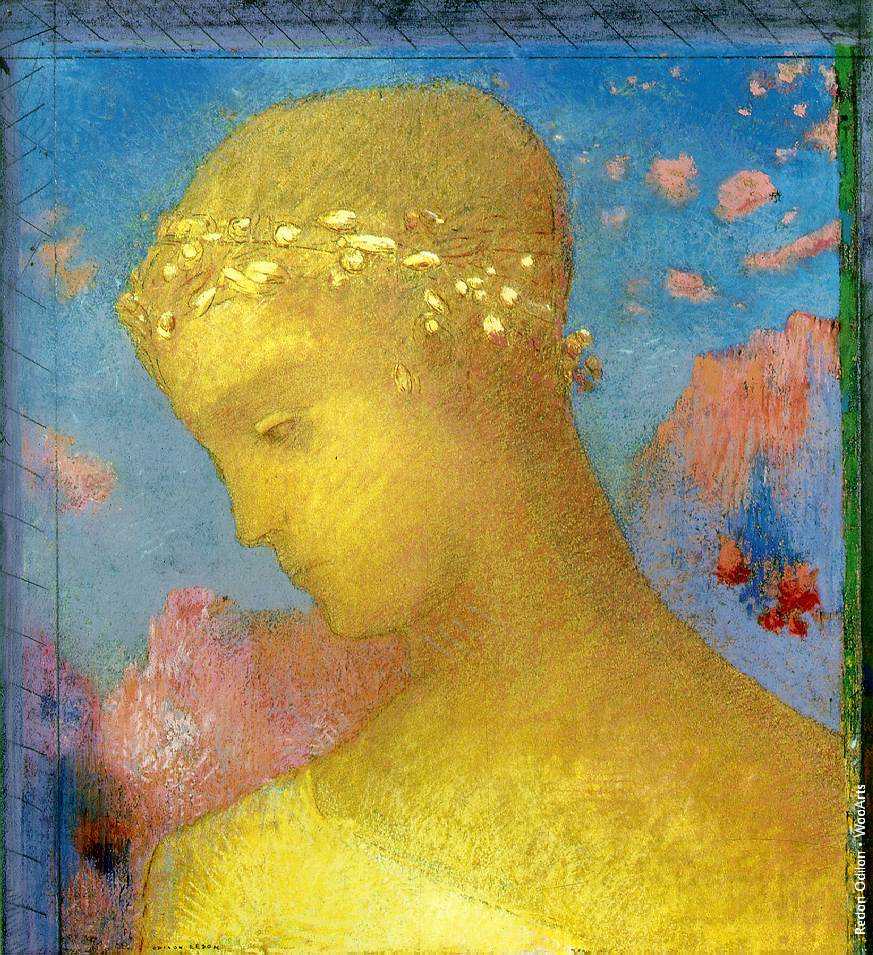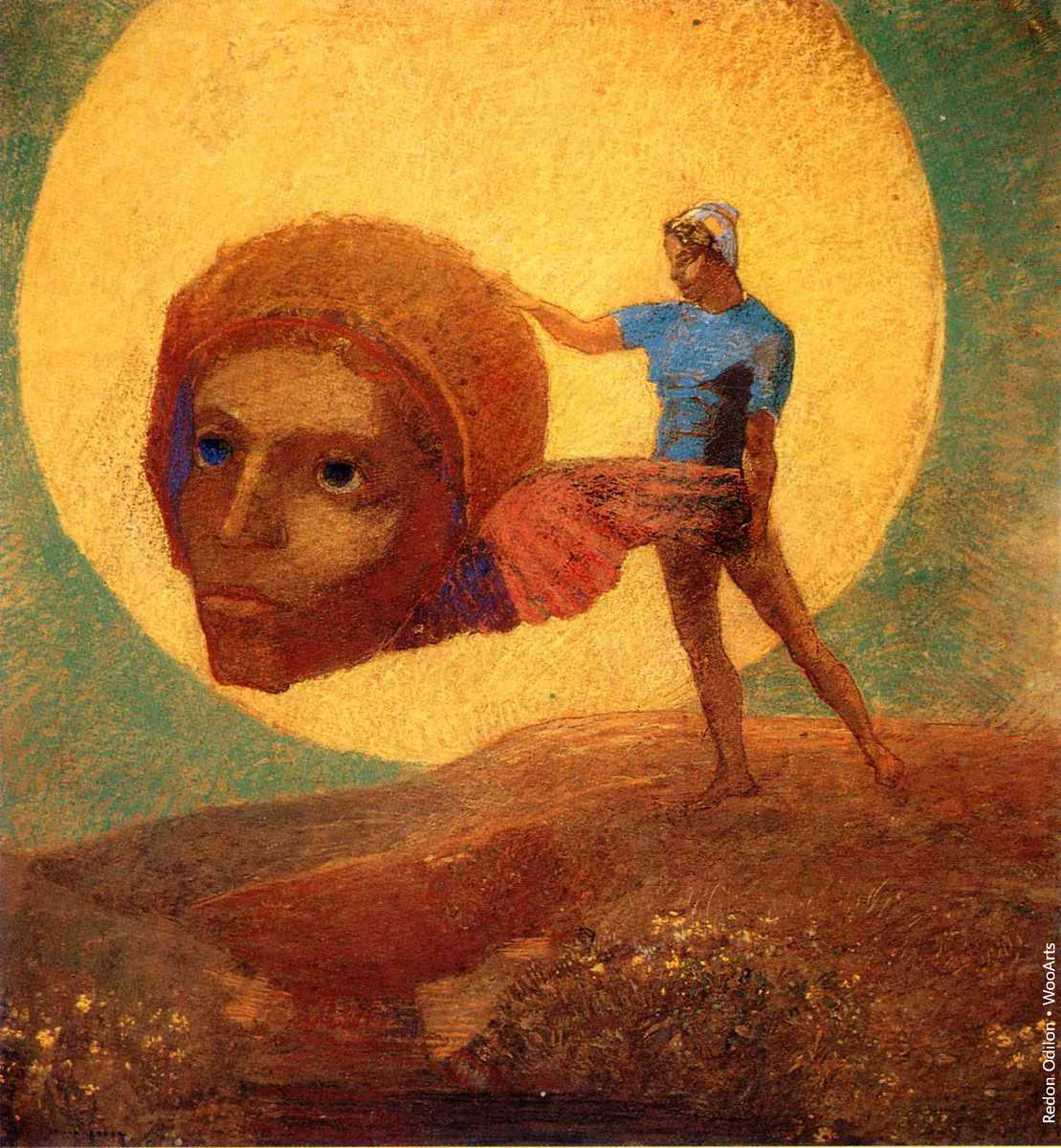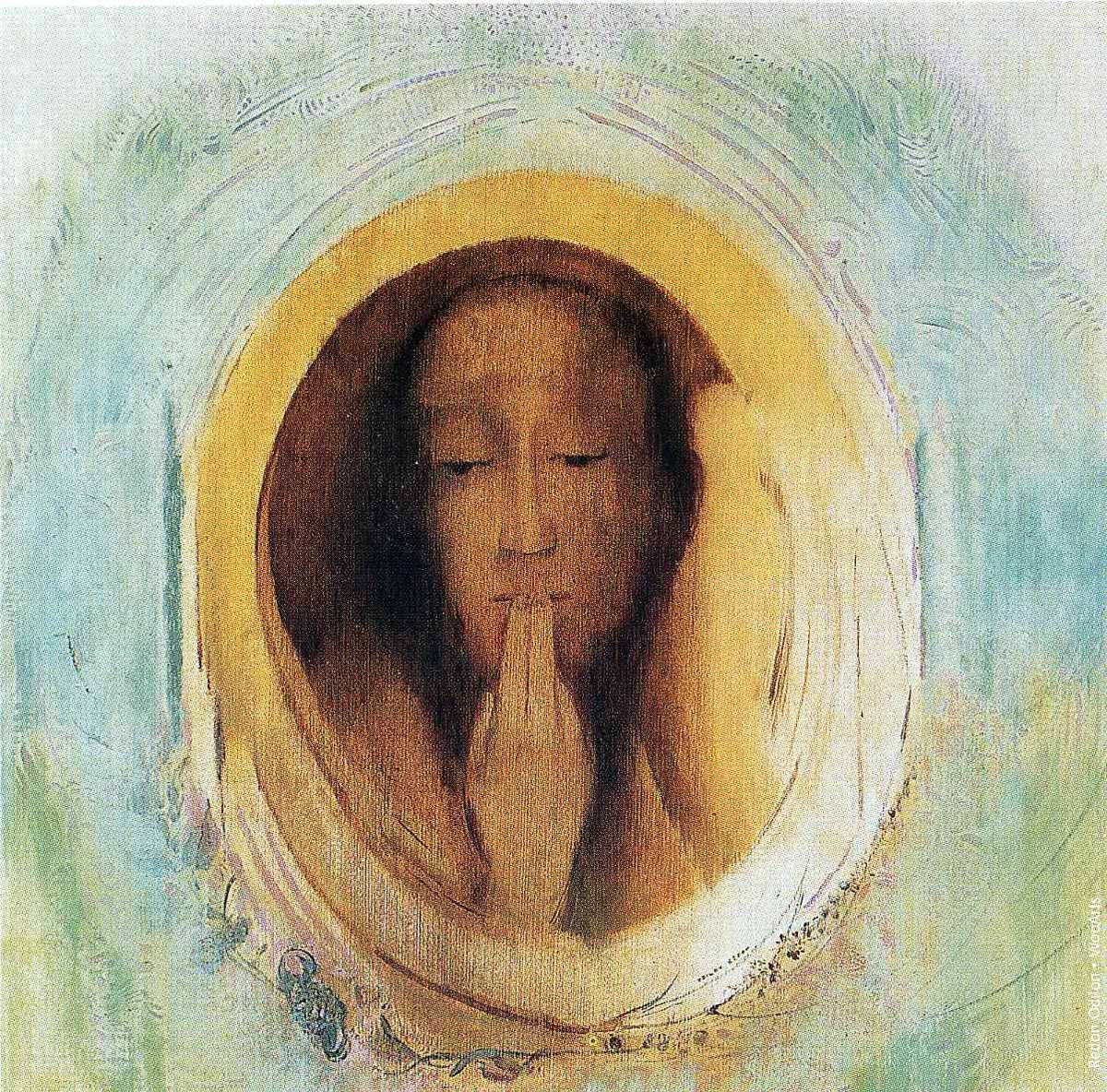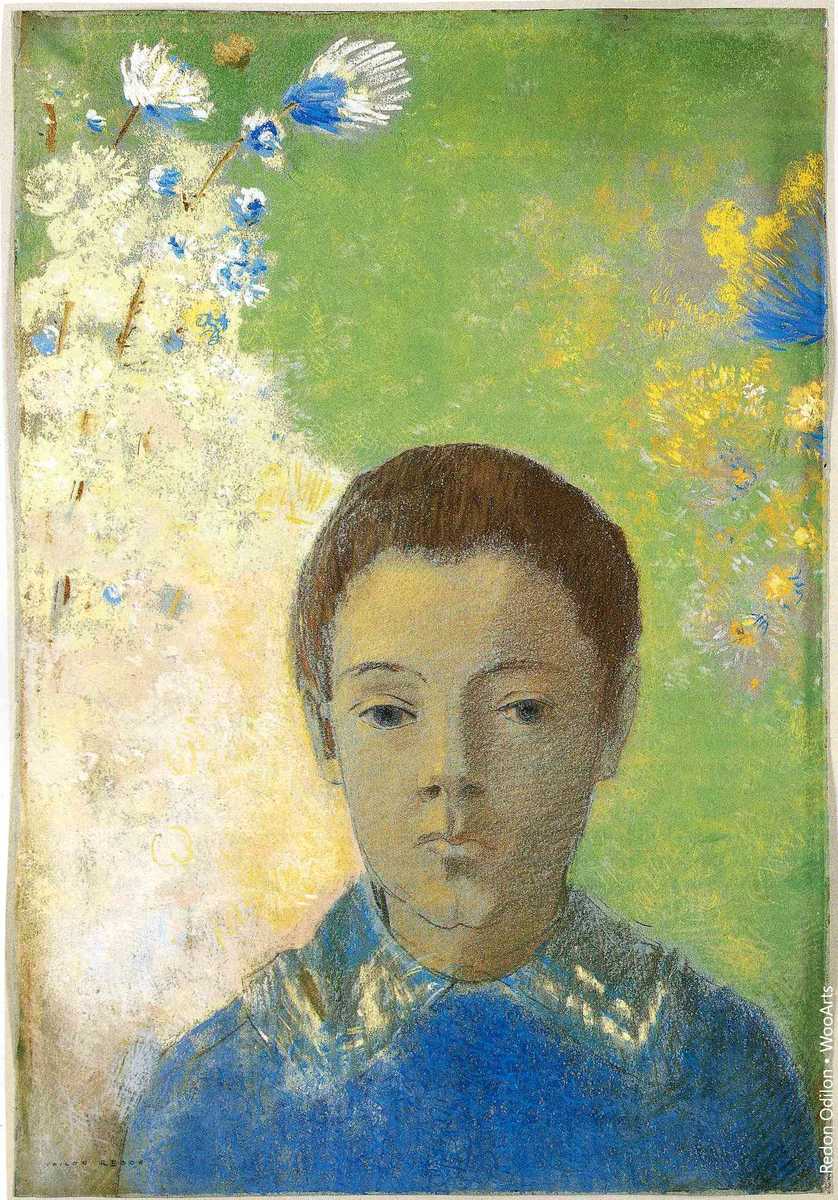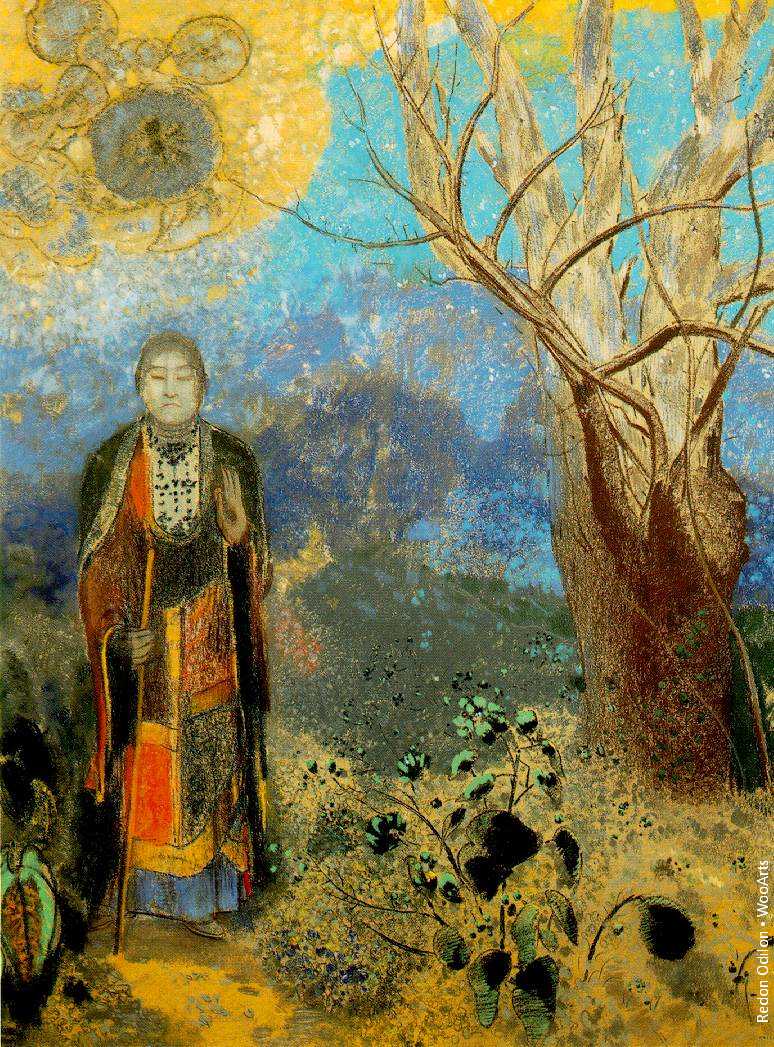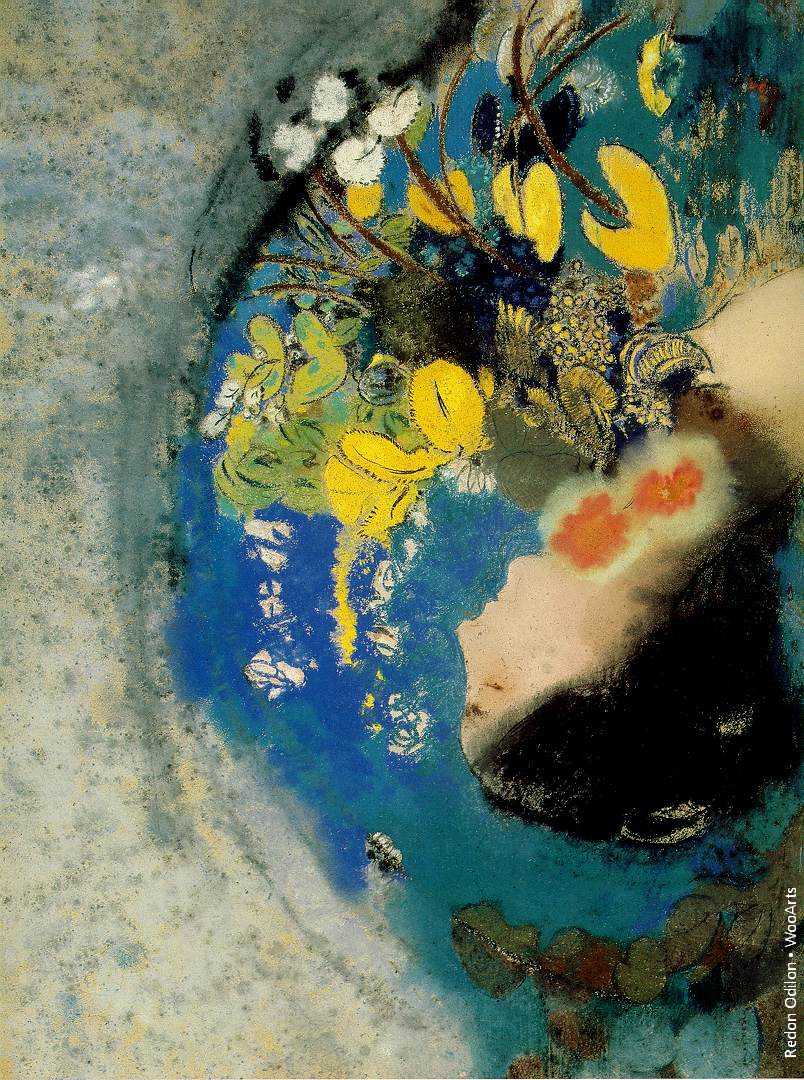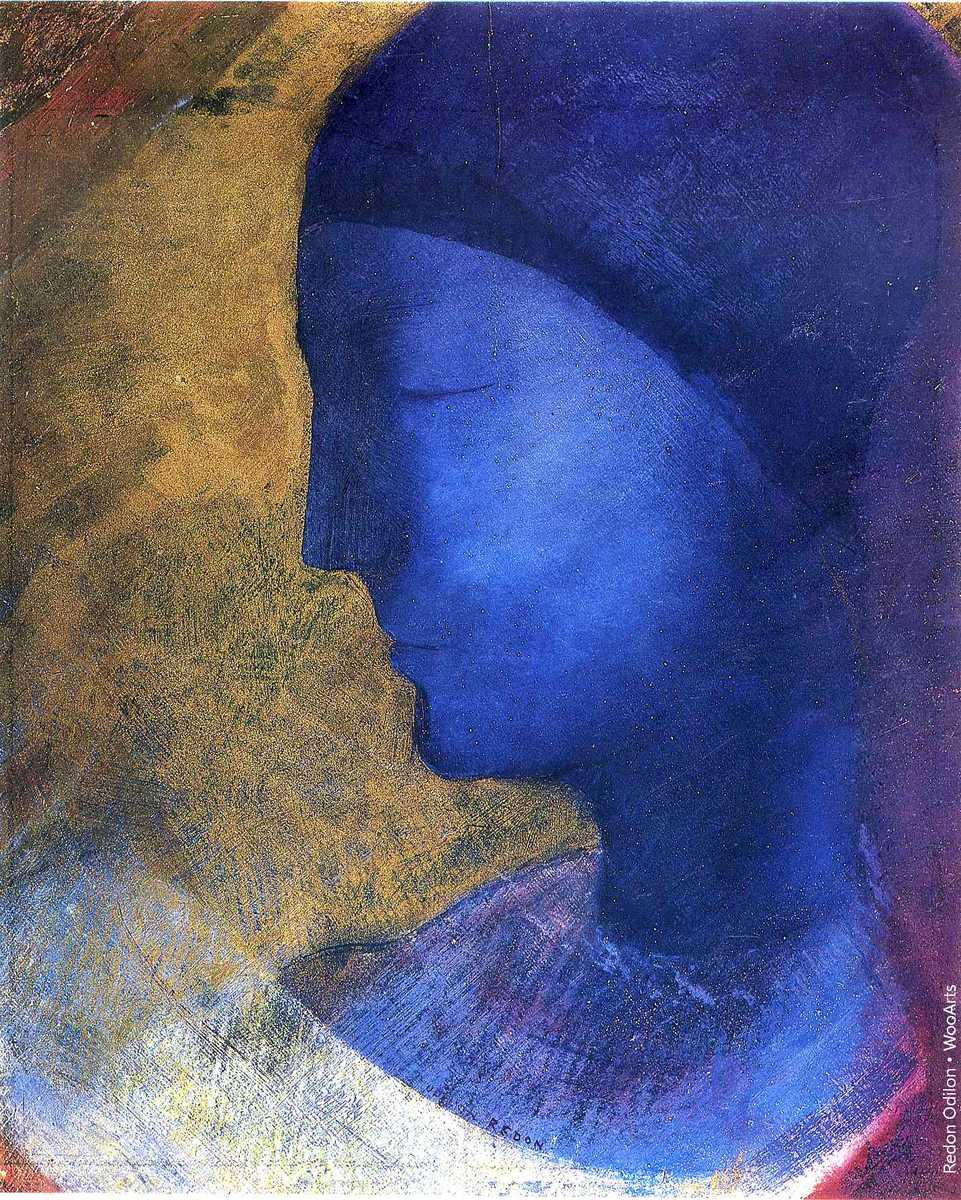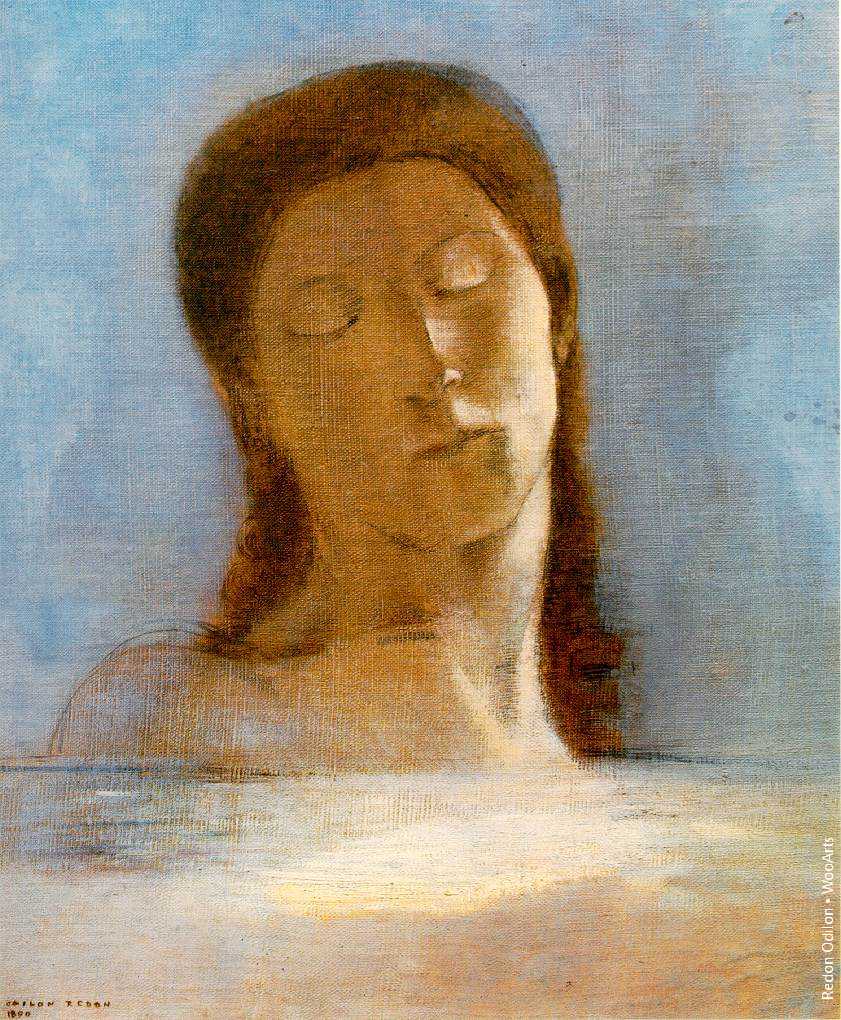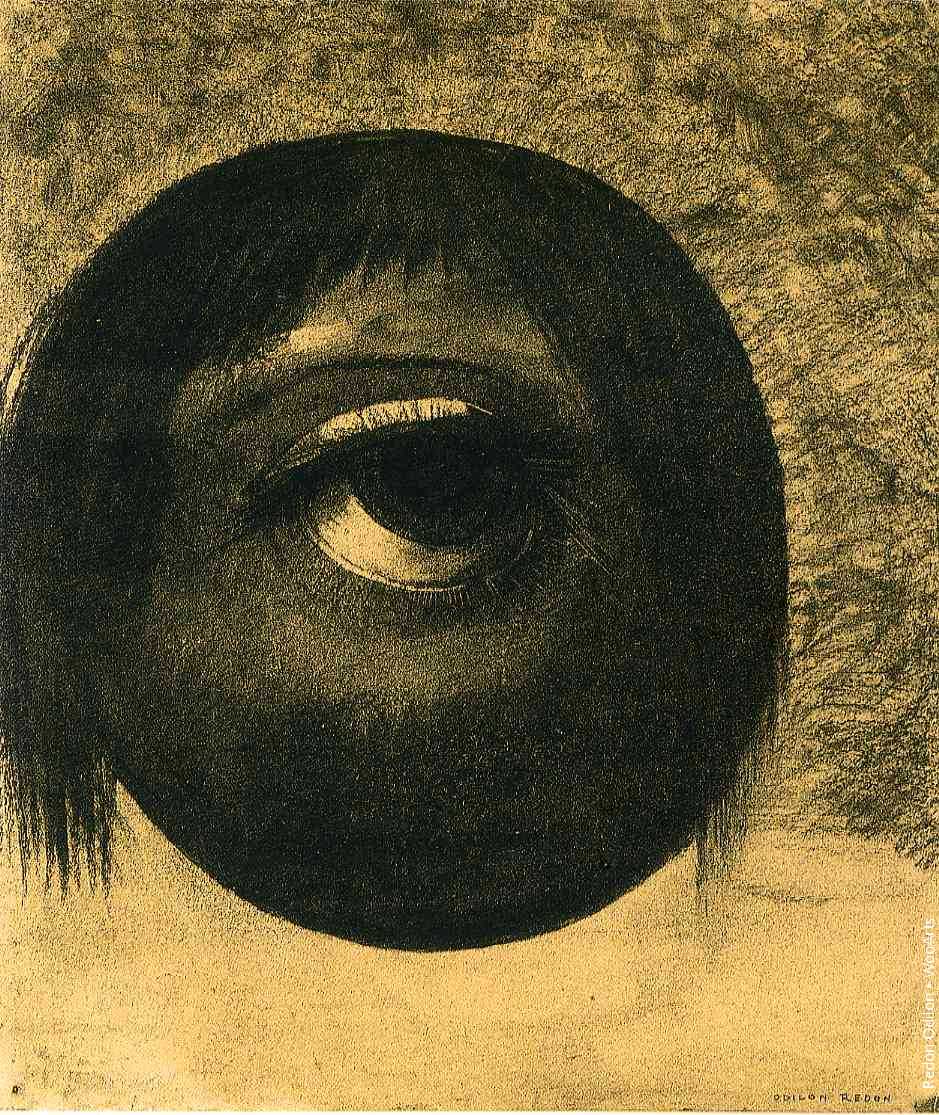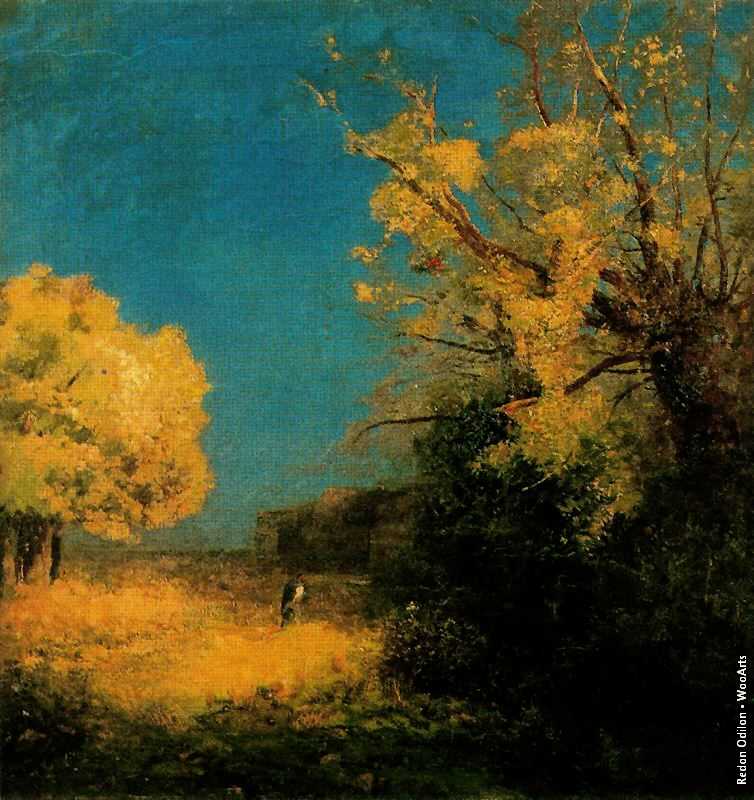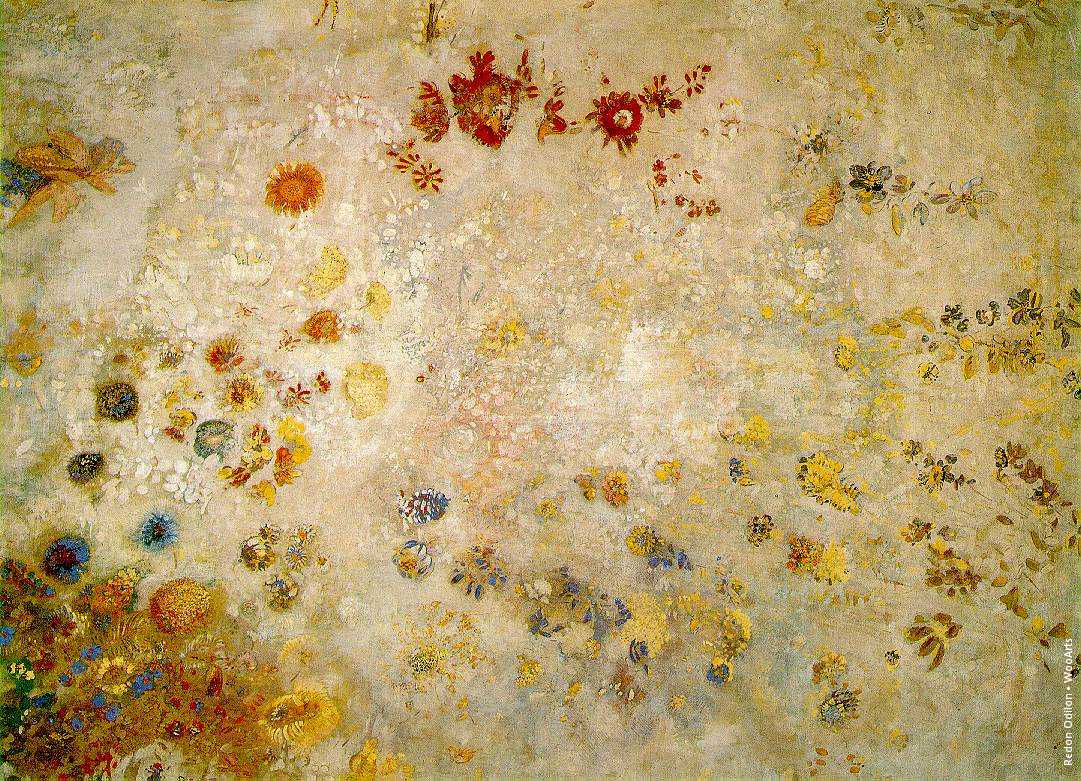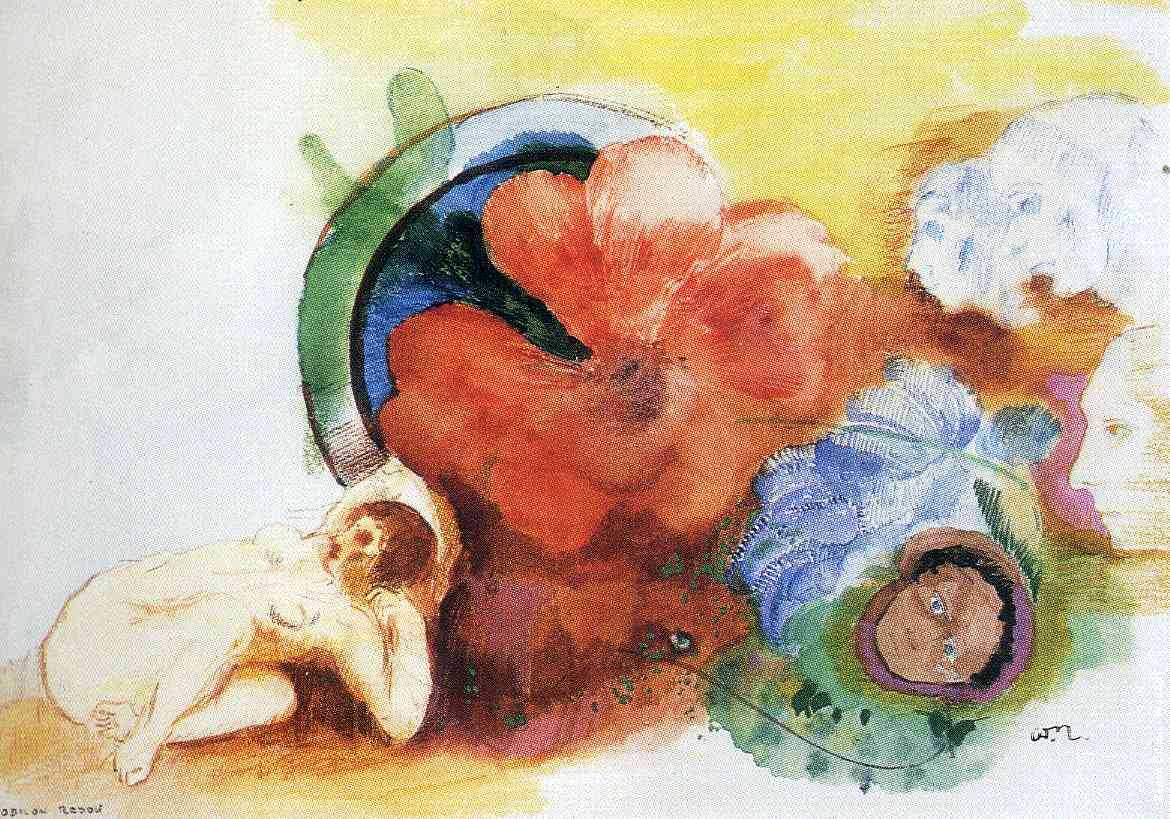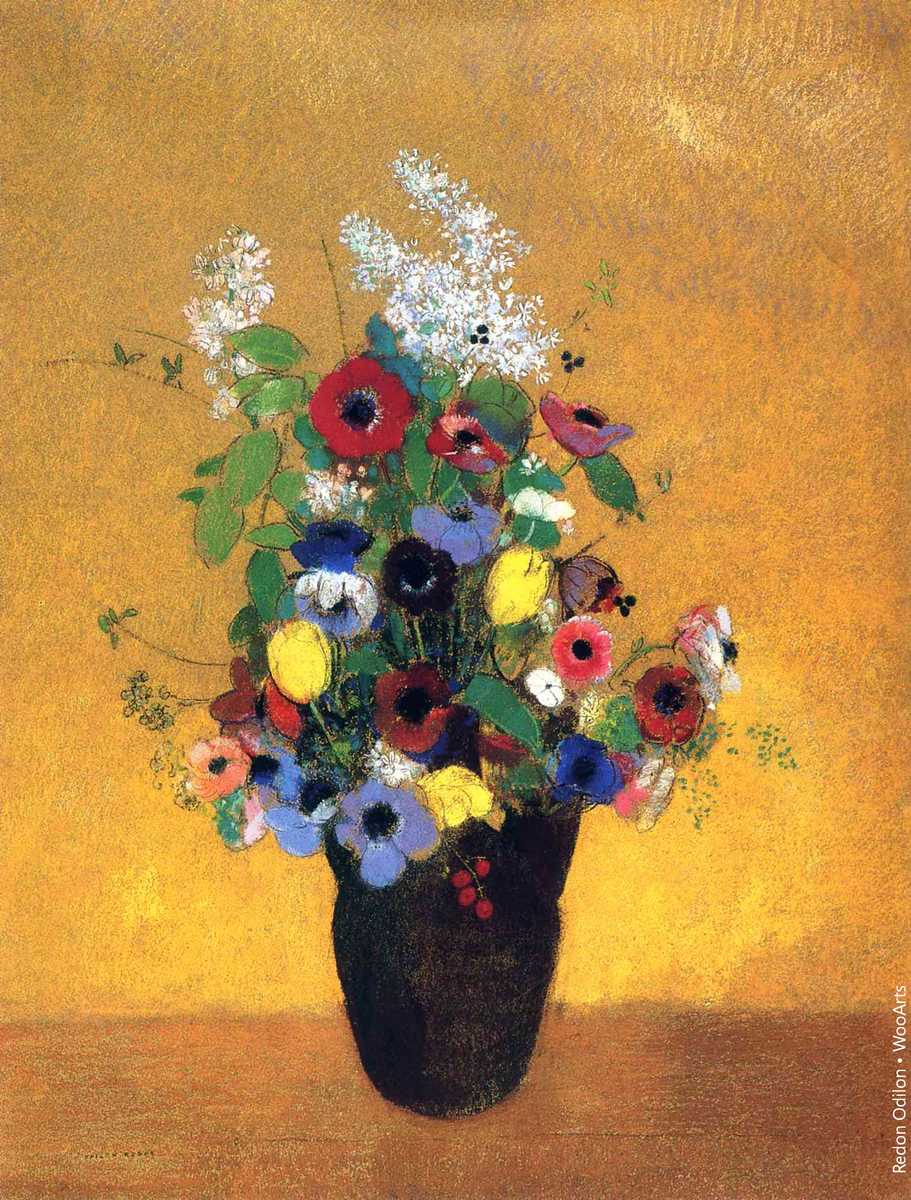Odilon Redon: Exploring the Dreamscape of Symbolism
Odilon Redon (1840-1916), a French symbolist painter, is renowned for his unique and enigmatic style that transcends conventional artistic boundaries. His work, characterized by its dreamlike quality, surreal imagery, and a fascination with the macabre and mystical, stands as a testament to the Symbolist movement of the late 19th and early 20th centuries. In this article, we delve into the history, style, and critical analysis of Odilon Redon’s paintings.
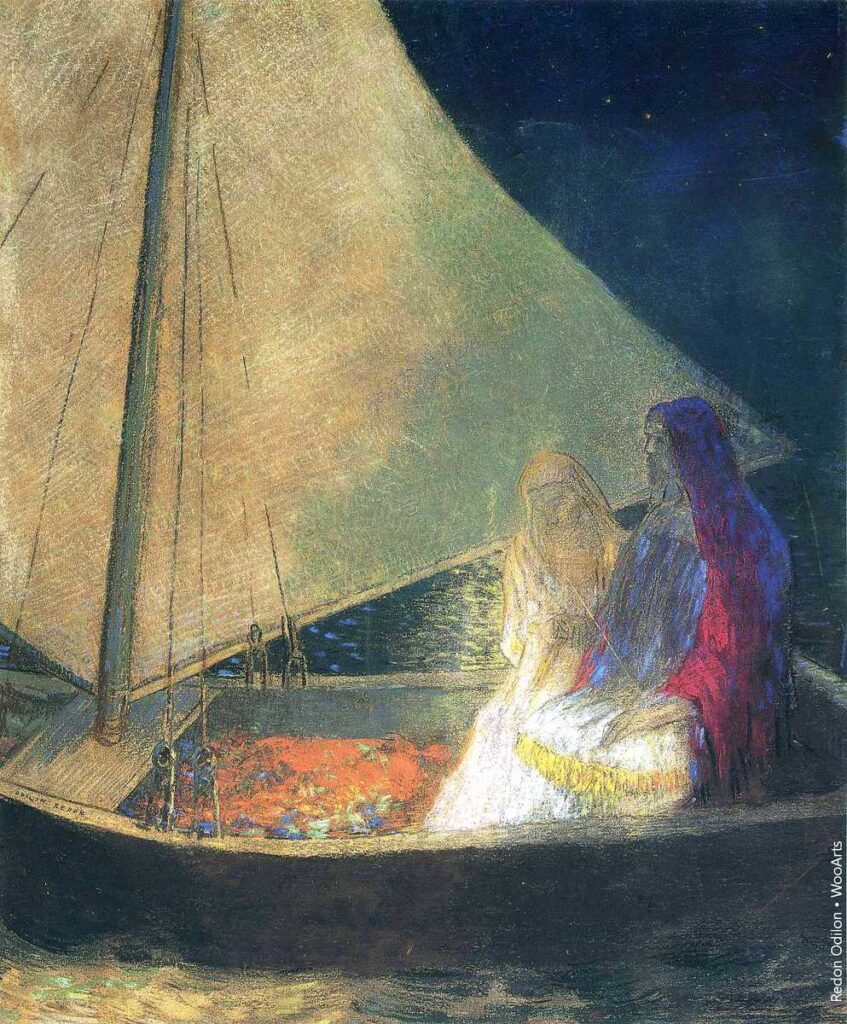
Early Life and Artistic Development: Born in Bordeaux, France, Redon initially pursued a career in architecture before turning to art. His early works, influenced by the Realist and Romantic movements, displayed a conventional style. However, a pivotal moment came when he encountered the works of the Symbolist poet Charles Baudelaire and the innovative printmaker Rodolphe Bresdin. These encounters had a profound impact on Redon’s artistic direction.
Noirs and Charcoals (1870s-1880s): Redon gained recognition for his “Noirs” series during the 1870s and 1880s, which consisted of dark, monochromatic drawings and lithographs. These pieces, often described as “black dreams,” featured fantastical and nightmarish imagery. Critics have interpreted these works as a representation of the artist’s inner world, exploring themes of the subconscious, dreams, and the mystical.
Transition to Color (1890s): In the 1890s, Redon transitioned from his predominantly black and white palette to experimenting with color. This phase marked the beginning of a more colorful and vibrant period in his artistic career. He created a series of pastels and paintings, known for their vividness and ethereal quality. His use of color was no less imaginative than his earlier black and white works, as he explored themes of fantasy, nature, and the supernatural in his colorful pieces.
Mystical and Symbolic Imagery: Redon’s works are filled with symbolism, drawing inspiration from literature, mythology, and his own imagination. His depictions of floating eyes, strange creatures, and disembodied heads have puzzled and intrigued art enthusiasts for generations. Critics have interpreted his paintings as visual poems, inviting viewers to explore the mysteries of the human psyche and the transcendental.
Influence on Later Art Movements: While Redon was not widely embraced during his lifetime, his work had a significant impact on subsequent art movements. His imaginative approach to color and form influenced the Surrealists, particularly artists like Salvador Dalí and René Magritte, who admired Redon’s ability to evoke the uncanny and surreal.
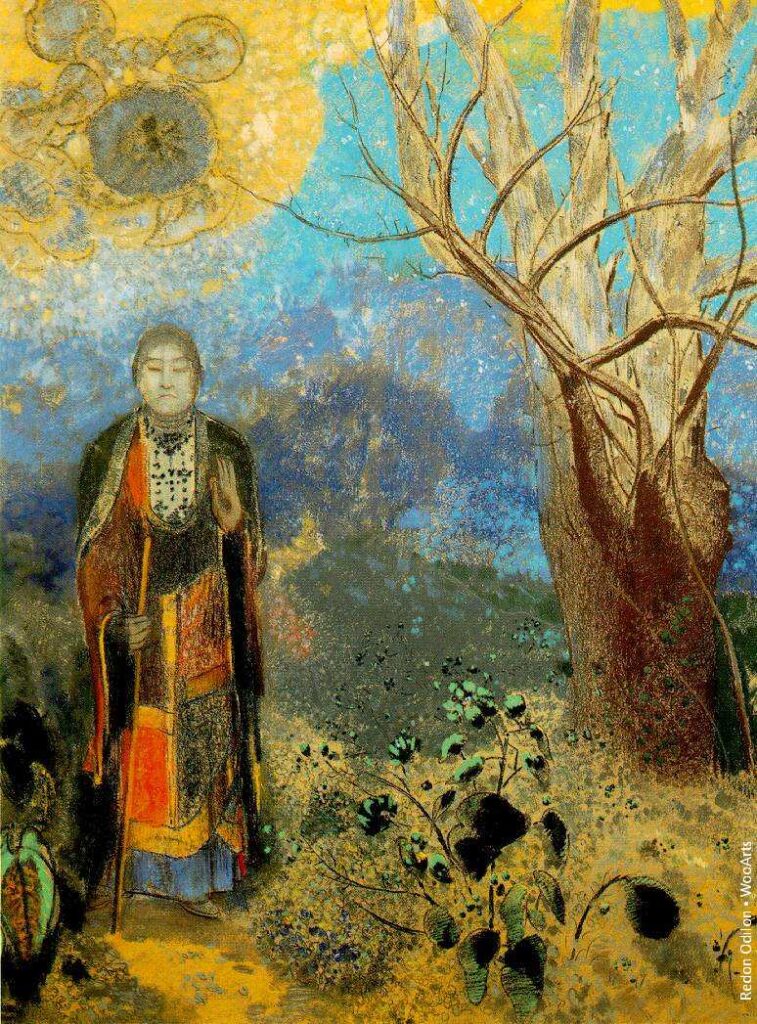
Legacy and Critical Reception: Odilon Redon’s paintings continue to captivate contemporary audiences, as they offer a unique blend of the fantastical and the introspective. Critics applaud his ability to traverse the boundary between reality and dreams, exploring the inner recesses of the human mind. His legacy as a pioneering symbolist artist endures, and his work remains an essential part of the art historical canon.
In conclusion, Odilon Redon’s art invites us to journey into the realm of the mysterious and the subconscious. His ability to create dreamlike, symbolic, and imaginative works has left an indelible mark on the art world, challenging viewers to ponder the depths of the human psyche and the boundaries of artistic expression.

Odilon Redon: A Critic’s Perspective on His Evolution, Influence, and Followers
Evolution of Odilon Redon’s Art: Odilon Redon’s artistic evolution is a testament to his boundless creativity and willingness to experiment. He began his career as a conventional artist, influenced by Realism and Romanticism. However, it was his encounter with Symbolist poets like Charles Baudelaire and visionary printmaker Rodolphe Bresdin that ignited a transformation in his work.
Redon’s early “Noirs” series, featuring dark, monochromatic imagery, marked a significant departure from traditional art. These works, characterized by nightmarish and fantastical themes, delved into the depths of the subconscious. Over time, Redon transitioned to using color, introducing a vibrant and ethereal quality to his art. His work evolved to incorporate themes of mysticism, nature, and the supernatural, creating a surreal and enigmatic aesthetic.
Influence on the Art World: Odilon Redon’s impact on the art world extends far beyond his own creations. His innovative approach to color, form, and symbolism influenced subsequent art movements, most notably Surrealism.
- Surrealism: Redon’s ability to evoke the uncanny and surreal in his paintings resonated deeply with Surrealist artists like Salvador Dalí and René Magritte. His dreamlike imagery and exploration of the subconscious served as a precursor to the Surrealist movement. Redon’s influence on Surrealism is particularly evident in Dalí’s fascination with dreamscapes and Magritte’s use of ordinary objects in unexpected and irrational contexts.
- Expressionism: Redon’s emphasis on emotional and symbolic content over realistic representation also left an imprint on the Expressionist movement. Expressionist artists sought to convey inner emotional states through distorted and symbolic forms, a concept that aligned with Redon’s approach.
Followers and Continuation of His Legacy: While Odilon Redon may not have founded a formal school or had a legion of direct followers, his work has inspired countless artists who share his fascination with the mysterious and symbolic. Some contemporary artists and movements that have been influenced by Redon include:
- Contemporary Surrealists: Artists like Yves Tanguy and Max Ernst carried forward Redon’s legacy by creating dreamlike and surreal artworks that echo his exploration of the subconscious.
- Abstract Expressionists: The abstract expressionists, including Mark Rothko and Jackson Pollock, drew inspiration from Redon’s emphasis on emotion and the spiritual in art. While their styles were significantly different, they shared a desire to transcend the physical in their work.
- Neo-Symbolism: In recent years, there has been a resurgence of interest in symbolism and mysticism in contemporary art. Some artists explore themes reminiscent of Redon’s, using symbolism and imaginative imagery to delve into the human psyche.
In conclusion, Odilon Redon’s artistic journey from conventional beginnings to his pioneering work in Symbolism, along with his influence on subsequent art movements, underscores his enduring impact on the art world. His ability to evoke the mysterious and the subconscious continues to inspire artists and captivate audiences, making him a crucial figure in the development of modern and contemporary art.


